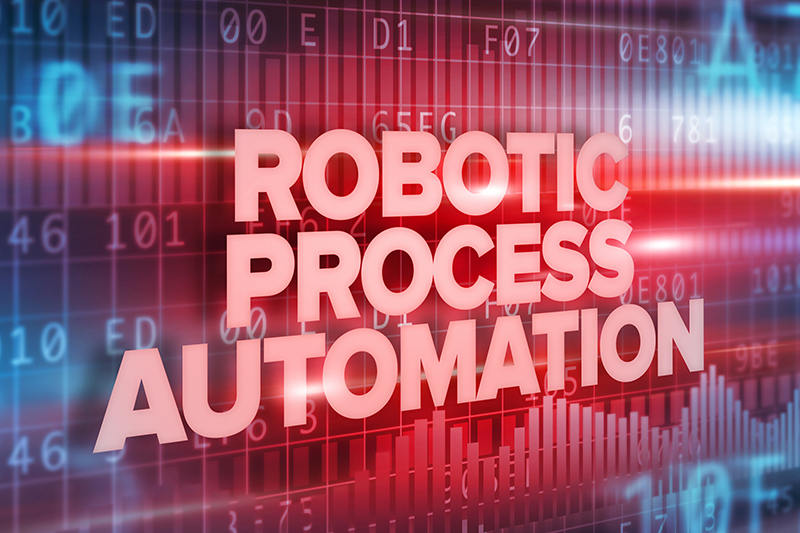Hope you’ve read our blog on the “Role of Robotic Process Automation (RPA) In The Banking Industry”.
As discussed, robotic process automation (RPA) strongly supports the financial services industry in processing banking work that is repetitive in nature. Banks and other financial institutions work constantly to remain competitive and provide exceptional customer services to users. Professional RPA services help banks and other financial institutions to automate mundane, rule-based tasks, and effectively respond to queries in real-time, thus reducing the turnaround time.
According to a report from Allied Market Research, the global robotic process automation (RPA) in the financial services market which was valued at $340.95 million in 2020, is predicted to reach $4,883.41 million by 2030. The market is expected to grow at a CAGR of 30.9% from 2021 to 2030.
Adopting RPA brings invaluable benefits for the banks operating in the digital economy. RPA tools help banks & financial institutions to –
- increase productivity by engaging customers in real-time and leveraging the immense benefits of robots
- automate many manual tasks such as clicking and opening applications, sending emails, and copying information from one banking system to another
- make it easy to handle various tasks crucial to the mortgage lending process, such as loan initiation, document processing, financial comparisons, and quality control
With many such advantages, the adoption of RPA in financial services is expected to grow tremendously in the coming years.
Market growth drivers
Key factors that are driving the market growth are –
- adoption of RPA by banks for various financial processes
- easier loan processing
- better customer services through RPA
- technological advancements in automation processes
Financial processes that are automated by RPA in present banking include various other tasks such as automatic report generation, know your customer (KYC), anti-money laundering, mortgage lending, and credit card processing.
Advancements in RPA systems such as artificial intelligence (AI) and machine learning (ML) are anticipated to make the banking systems more efficient and enhance performance. Increased use of AI chatbots for customer services is expected to enhance the customer experience and conveniently solve their problems. The rise in the adoption of AI in various financial processes for the automation of operations is expected to fuel the growth of the market in the coming years.
The COVID-19 pandemic outbreak has also increased the demand for RPA in financial services. During the global lockdown, RPA supported many financial companies to remain operational via remote working. Financial firms are also increasingly investing in RPA in order to overcome the burden of manual processes.
However, resistance by employees and regular maintenance of the system are factors that may restrain the market growth to some extent.
Market Segmentation
The market is segmented on the basis of component, deployment mode, enterprise size, application, end user, and region.
By component, the market is segmented into solution and service. The service segment is expected to register the highest CAGR of 33.3% from 2021 to 2030. On the basis of deployment mode, the market is divided into on-premise and cloud. In 2020, the on-premise segment held the largest market share, holding nearly three-fifths of the total market share, and is expected to continue its leadership status during the forecast period. Moreover, the cloud segment is predicted to register the highest CAGR of 34.1% in future.
Based on enterprise size, the market is segregated into large enterprises and small and medium enterprises. By application, the market helps with customer account management, fraud prevention, reporting & invoice automation, account opening & KYC, and others. The end users of the market are banks, insurance companies, credit unions, and others.
Region wise, the market is divided into North America (U.S. and Canada), Europe (UK, Germany, France, Italy, Spain, and Rest of Europe), Asia-Pacific (China, Japan, India, Australia, South Korea, and the Rest of Asia-Pacific), and LAMEA (Latin America, Middle East, and Africa).
North America contributed to the highest share in terms of revenue in 2020 and is estimated to continue its dominant share through 2030. Moreover, the Asia-Pacific region is projected to manifest the fastest CAGR of 34.6% during the forecast period.
Some of the key market players mentioned in the report include Antworks, Automation Anywhere Inc., Atos SE, Blue Prism Limited, IBM, Kofax Inc., NICE SYSTEMS, Protiviti Inc., UiPath, and WorkFusion, Inc. Businesses in any industry can consider partnering with an experienced robotic process automation company to automate those monotonous digital tasks such as data entry, form filling, claims processing, calculations, and more.




